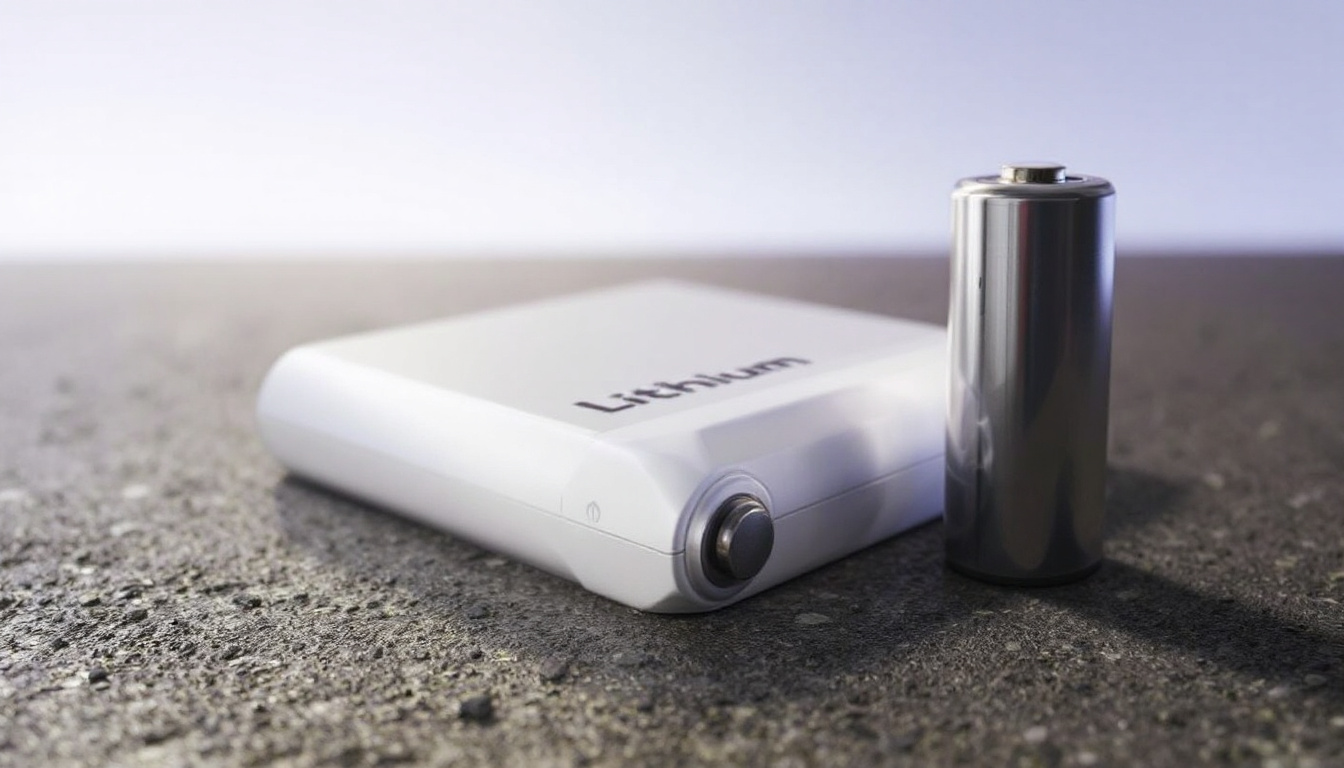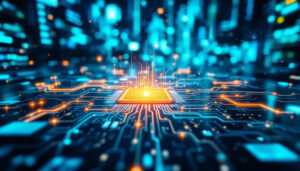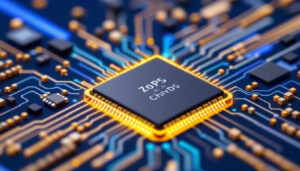Lithium-ion batteries power much of the modern world, seamlessly woven into daily life. From ensuring smartphones stay charged to driving the rapid shift to electric vehicles, their importance cannot be overstated. Offering unmatched efficiency, portability, and energy density, these batteries have become the go-to solution for technologies demanding reliability and performance. Their rise signals a quiet revolution in how energy is stored and utilized, making them a cornerstone in advancing innovation and sustainability ‘Explaining Lithium-Ion Batteries’.
The Core Science Behind Lithium-Ion Batteries
Lithium-ion batteries have become indispensable for modern technology. Their working mechanism, fine-tuned through years of scientific research, is what has led to their widespread application. To understand why they are so efficient, it’s crucial to examine their design and functionality.
Key Components of Lithium-Ion Batteries
The performance of a lithium-ion battery is a result of its carefully constructed components, each serving a specific and vital role:
- Anode: The anode, typically made of graphite, stores lithium ions when the battery is in a charged state. During discharge, these ions leave the anode, allowing an electric current to flow. Think of the anode as the origin point in this energy transfer cycle.
- Cathode: Opposite the anode lies the cathode, made from lithium-based compounds like lithium cobalt oxide. It receives lithium ions during charge and releases them during discharge, completing the flow of energy. The cathode is critical for determining both energy density and battery lifespan.
- Electrolyte: Acting as the conductor, the electrolyte enables lithium ions to move seamlessly between the anode and cathode. Organic solvents mixed with lithium salts form a liquid electrolyte in most lithium-ion batteries, ensuring efficient charge transfer.
- Separator: Preventing short circuits, the separator is a porous film that separates the anode and cathode. It allows only the ions to pass through while blocking any direct electrical contact.
Each component works in unison, likened to the gears in a well-oiled machine, ensuring the battery delivers on its promise of efficiency and reliability.

Photo by Sergei Starostin
To further understand this intricate process, readers can explore How Lithium-ion Batteries Work.
Energy Density and Rechargeability
One of the standout qualities of lithium-ion batteries is their unparalleled energy density. Energy density refers to how much energy a battery can store relative to its weight. Lithium-ion batteries outclass other types, such as nickel-metal hydride or lead-acid, due to their lightweight and ability to pack a significant amount of power. This makes them ideal for portable devices like smartphones and laptops as well as electric vehicles.
Rechargeability is another defining feature. Unlike single-use batteries, lithium-ion batteries can undergo hundreds to thousands of charge-discharge cycles. This resilience is made possible by the chemical properties of lithium, an element whose atomic structure allows efficient energy transfer.
Additionally, their quick charging times save users valuable time. Whether you’re powering a car or a smartphone, their robust rechargeability underpins their dominance in today’s portable and sustainable technologies.
For an in-depth look into the science guiding battery innovation, check out BU-204: How do Lithium Batteries Work?.
Applications of Lithium-Ion Batteries
The versatility of lithium-ion batteries lies in their ability to deliver high energy density, long lifespan, and efficient performance across various sectors. From handheld devices to large-scale infrastructure, their impact extends far beyond convenience, shaping industries and enabling progress. Below, we explore their critical applications.
Consumer Electronics: Smartphones, Laptops, and Wearables

Photo by Anna Tarazevich
Lithium-ion batteries power the devices we use every single day: smartphones, laptops, wearables, and tablets. Their compact size and high energy capacity enable sleek designs and lightweight portability. For instance, smartphones rely on lithium-ion batteries to provide longer usage time without sacrificing aesthetics or functionality. This technology also underpins high-performance laptops, offering users the flexibility of computing on the go without needing frequent charges.
Wearable devices like fitness trackers and smartwatches further illustrate this by delivering long-lasting energy in profoundly small packages. Incorporating lithium-ion batteries laid the foundation for innovation in portable technology. They allow these devices to function efficiently while catering to our fast-paced, mobile lifestyles.
For more insights on energy-related innovations, visit the Clean Energy Institute.
Renewable Energy Storage
Renewable energy systems like solar panels and wind turbines depend on lithium-ion batteries for efficient energy storage. The intermittent nature of renewable energy necessitates reliable storage solutions that can release power when production is low, such as during cloudy days or wind-free periods.
Lithium-ion batteries store electricity harvested during peak production times and release it for use during shortages. Their scalability makes them ideal for residential and industrial applications alike, providing a path toward less dependence on fossil fuels. Robust storage batteries transform renewable energy into a viable, consistent power source, marking a significant step forward in sustainability efforts.
Want to learn more about renewable energy storage solutions? Check out this resource.
Electric Vehicles and Transportation
Lithium-ion technology has arguably found its most transformative application in the transportation industry. Electric vehicles (EVs), electric scooters, and even electric aircraft depend on these batteries to operate efficiently. They deliver the high energy density required to generate significant driving ranges while remaining lightweight enough to keep vehicles efficient.
In EVs, lithium-ion batteries have also contributed to reducing carbon emissions. By converting traditional gasoline engines to electrical power, they cut greenhouse gas emissions significantly, contributing to global environmental objectives. Moreover, advancements in battery recycling are making EVs even more sustainable.
As demand for efficient, green transportation grows, the role of lithium-ion batteries continues to scale. Advanced applications like electric airplanes further demonstrate the flexibility of this technology to revolutionize industries.
Explore EV battery performance innovations on RELiON’s application page.
Advantages and Challenges of Lithium-Ion Batteries
Lithium-ion batteries have revolutionized how we power everything from smartphones to electric vehicles. Their high energy efficiency, scalability, and lightweight nature make them a staple in numerous industries. However, like any technology, they also come with challenges, particularly when it comes to environmental impact and safety risks. Below, we’ll break down their key advantages and challenges.
Efficiency and Scalability Benefits
Lithium-ion batteries distinguish themselves with impressive power efficiency and scalability, making them suitable for various applications.
- High Energy Efficiency: Compared to older technologies like lead-acid or nickel-based batteries, lithium-ion batteries deliver a higher energy density. This means they can store more energy in a compact form, allowing devices to run longer without requiring a recharge.
- Fast-Charging Capabilities: These batteries are built for speed when it comes to charging. This feature is especially crucial for electric vehicle (EV) owners who rely on quick charging to keep their cars operational during long trips.
- Scalability Across Industries: One of the standout features of lithium-ion technology is its adaptability. From powering small wearable devices to serving as massive energy storage systems in renewable power applications, these batteries fit an array of needs.
By combining these factors, lithium-ion batteries become the go-to solution for both small consumer gadgets and large-scale systems like grid storage for renewable energy.
For more on how battery type impacts energy systems, see Lithium-ion Battery – Clean Energy Institute.
Environmental and Safety Concerns
While lithium-ion batteries excel in performance, they bring forth important environmental and safety debates.
Thermal Runaway and Fire Risks
A significant safety concern lies in their vulnerability to thermal runaway, a chain reaction where the battery overheats and risks catching fire. This is why we often hear about safety measures in the aviation industry or specific recalls due to battery malfunctions.
- Heat Sensitivity: Since lithium-ion batteries are sensitive to high temperatures, misuse or manufacturing faults can compromise safety.
- Flammable Electrolytes: Organic electrolytes within these batteries are flammable, further amplifying this risk under extreme conditions.
Mining of Rare Earth Metals
The extraction of lithium and cobalt—the critical components in these batteries—brings its own environmental and ethical challenges. Mining these materials uses significant energy and often takes place in regions where labor and environmental standards are questionable.
- Impact: Mining contributes to land degradation, water pollution, and greenhouse gas emissions.
- Ethical Issues: Many of the materials are sourced from areas where improper working conditions and child labor are reported.
Recycling Limitations
Although lithium-ion batteries appear sustainable due to their reusability, recycling them remains a technical and economic challenge. Current recycling processes are expensive and energy-intensive, and a large percentage of used batteries often end up in landfills. This raises significant concerns about long-term sustainability.
To better understand the pros and cons of these batteries, check out resources like Lithium-ion Battery Pros and Cons.

Photo by Andersen EV
Lithium-ion batteries are undeniably advancing modern technology, but their intricate balance of strengths and weaknesses means they require ongoing innovation.
The Future of Lithium-Ion Batteries
Lithium-ion batteries have revolutionized how we power our world, but their evolution shows no signs of slowing. From technological advancements to sustainability breakthroughs, the future of these batteries holds immense promise. Below, we examine two key areas shaping their trajectory: advances in solid-state technology and innovations in sustainability and recycling.
Advances in Solid-State Technology
Solid-state batteries are poised to transform the lithium-ion landscape by replacing the liquid electrolytes currently in use with solid alternatives. Why does this matter? Liquid electrolytes, while efficient, carry inherent safety risks such as leakage and flammability. The shift to solid materials could eliminate these risks, resulting in safer, longer-lasting batteries.
One of the most anticipated benefits of solid-state technology is its potential for significantly higher energy density. With denser energy storage, devices can either operate longer on a single charge or become more compact without sacrificing performance. This is especially significant for electric vehicles (EVs), where greater energy density translates to extended driving ranges and smaller, more lightweight battery packs.
Furthermore, the longer lifecycle of solid-state batteries could redefine how we think about long-term energy solutions. While current lithium-ion batteries degrade over years of use, solid-state models are expected to retain their capacity longer, reducing the need for frequent replacements.
Companies and research firms worldwide are investing heavily in this innovation. According to The Future of Li-ion Battery Technology, advancements in solid-state batteries aim to combine durability with quick-charging capabilities, creating a win-win for consumers and industries alike.
Sustainability and Recycling Innovations
The environmental impact of lithium-ion batteries has been under scrutiny, first for the challenges of mining materials like lithium and cobalt, and second for the difficulty in recycling used batteries. However, groundbreaking strides are being made to tackle these concerns.
New recycling methods aim to extract lithium, cobalt, and other valuable metals from used batteries with minimal energy use and waste. Traditional processes, such as pyrometallurgy, are energy-intensive and emit greenhouse gases. Now, hydrometallurgical processes offer a cleaner alternative by using chemical solutions to recover raw materials.
For example, the concept of a circular economy seeks to keep resources in use for as long as possible. This approach requires rethinking every step of a battery’s lifecycle—from design that prioritizes recyclability to end-of-life solutions that return materials to the supply chain. Innovations like these are critical as global battery demand surges, as highlighted by Battery 2030: Resilient, sustainable, and circular.
Moreover, some companies are experimenting with second-life applications for used lithium-ion batteries. Instead of recycling them immediately, these batteries are repurposed—used in less demanding applications such as residential energy storage or backup power solutions. This not only extends the usable life of the battery but also reduces waste and conserves resources.
Efforts to promote sustainability go hand in hand with technology advancements. By integrating renewable energy sources into their production processes, manufacturers are also lowering the carbon footprint of battery production. For insights on lithium’s growing role in clean energy and renewables, visit The Future of Lithium: Trends and Forecast.
Innovations like solid-state batteries and advanced recycling methods have the potential to both enhance performance and address sustainability concerns, ensuring that lithium-ion technology continues to lead the way in powering the future.
Impact of Lithium-Ion Batteries on Everyday Life
Lithium-ion batteries have transformed modern living by serving as the primary energy source in countless devices and systems. Their ability to store energy reliably, compactly, and efficiently has played a pivotal role in shaping industries, lifestyles, and technology. Below, we examine key ways in which lithium-ion batteries affect everyday life and contribute to societal advancements.
Revolutionizing Communication and Connectivity
In today’s digital era, communication technologies depend heavily on lithium-ion batteries. They power smartphones, tablets, and laptops, enabling seamless connectivity across the globe. These batteries allow devices to become smaller and lighter while maintaining long operating hours. This advancement has made on-the-go communication and work a standard feature of modern life.
Wearable tech—such as smartwatches and fitness trackers—relies on lithium-ion batteries for extended functionality. These innovations not only keep us connected but also help us track health and fitness, integrating technology into daily routines more deeply than ever before.
For a deeper exploration of lithium-ion battery technology’s evolution, check Clean Energy Institute’s insights.
Enabling Sustainable Transportation
Lithium-ion batteries are the backbone of electric vehicles (EVs), marking a significant shift towards more sustainable transportation. The high energy density and long lifespan of these batteries provide sufficient driving ranges, making electric cars practical for everyday use. Moreover, their lightweight design helps improve vehicle efficiency without compromising performance.
Public transportation and micromobility solutions, such as e-scooters, e-buses, and electric rail systems, further demonstrate the integration of lithium-ion technology into greener alternatives. This shift not only lowers greenhouse gas emissions but also reduces dependency on fossil fuels.
Explore more about the role of lithium-ion batteries in transportation at Battle Born Batteries.
Enhancing Renewable Energy Adoption
The importance of lithium-ion batteries extends beyond individual devices, reaching into the realm of renewable energy storage. Solar panels and wind turbines, for example, rely on these batteries to store excess energy produced during peak times. This stored energy can then be used during low production periods, ensuring a consistent power supply.
The development of home battery systems has further popularized renewable energy adoption in residential areas, enabling homeowners to reduce energy costs and decrease their carbon footprint. By transforming intermittent power sources into reliable energy streams, lithium-ion batteries play a crucial role in the transition to sustainable energy solutions.
Learn about how lithium-ion batteries support sustainability in National Geographic’s analysis.
Driving Innovation in Healthcare
Lithium-ion batteries are also integral to the healthcare sector. From portable defibrillators to advanced imaging machines and powered prosthetics, they ensure reliable operation in critical applications. Their lightweight and efficient design allow medical devices to perform more naturally, improving patient care and mobility.
Remote monitoring devices, increasingly used in telemedicine, rely heavily on the compact power provided by lithium-ion batteries. This has enabled healthcare providers to extend their reach into patients’ homes, advancing treatment accessibility and efficiency.
To better understand the broader societal impact of lithium-ion battery proliferation, consider reading The Harmful Effects of Our Lithium Batteries.
Meeting Consumer Demand for Portability
Modern consumer expectations for portable technology would be unattainable without lithium-ion batteries. These batteries have enabled the creation of products that prioritize both performance and convenience. From handheld gaming consoles to noise-cancelling headphones, they cater to a world that values flexibility and mobility.
The shift toward portability has also expanded to domestic appliances, such as cordless vacuums and power tools, which benefit from lithium-ion technology. These innovations underscore a commitment to improving everyday life through compact, yet powerful, energy solutions.
Lithium-ion batteries are undeniably woven into the fabric of daily living, changing how we work, travel, and power our lives. Their versatility and efficiency continue to advance innovation across multiple domains while addressing energy and sustainability challenges for a better, more connected future.
Conclusion
Lithium-ion batteries continue to be a cornerstone of modern technology, driving progress across multiple industries. Their unmatched efficiency and versatility make them indispensable for both personal devices and large-scale systems, propelling innovation while addressing global energy demands.
As advancements like solid-state batteries and sustainable recycling emerge, the future of lithium-ion technology looks promising. Incorporating these innovations will not only enhance performance but also mitigate the environmental challenges associated with battery production and disposal.
The importance of building a sustainable energy ecosystem where lithium-ion batteries play a vital role cannot be overstated. To dive deeper into related topics, explore iPhone Battery Draining Too Fast? 12 Proven Solutions That Actually Work.
Continued exploration and development will ensure these batteries remain a pivotal tool in ushering in a cleaner, more connected world. Their evolution signals a commitment to better solutions, proving their value far beyond just powering devices.









